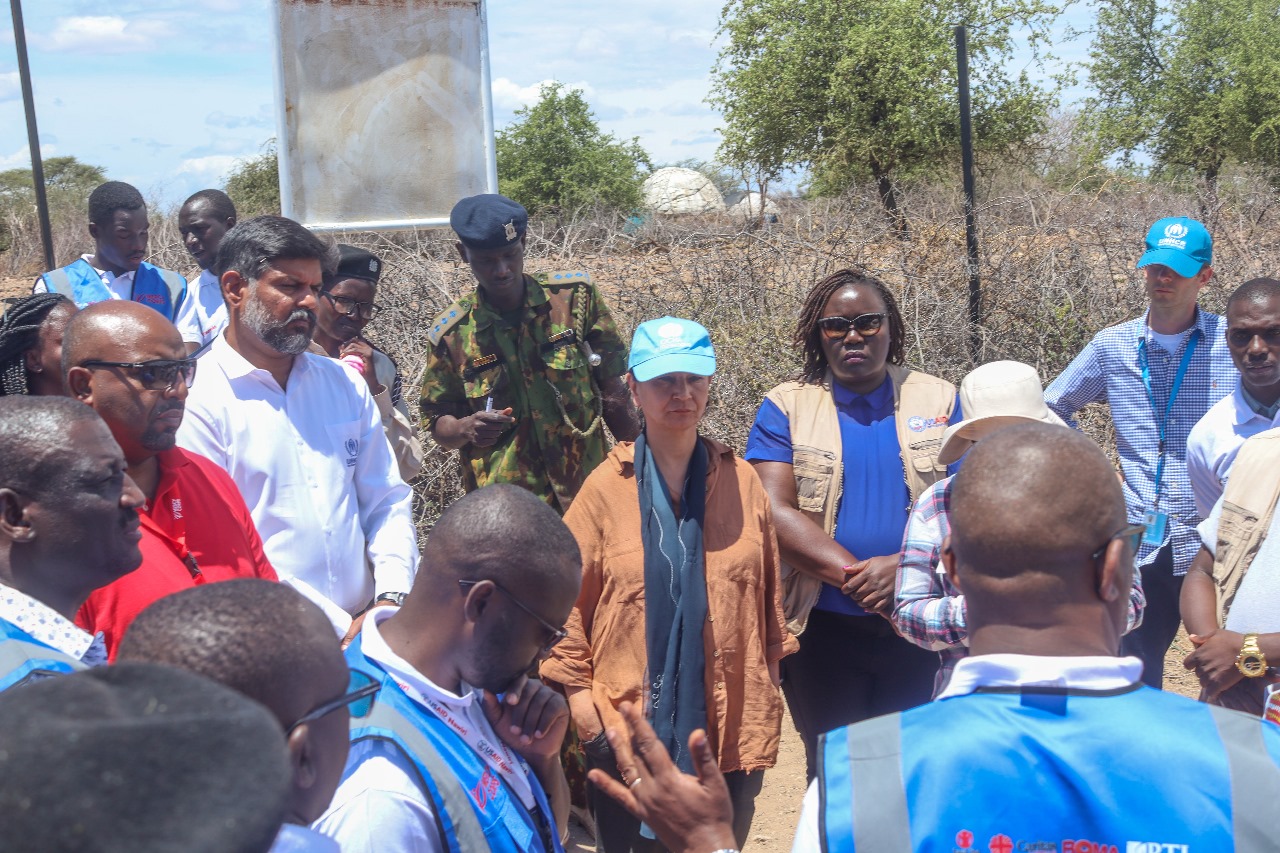
In Kakuma, a refugee camp in Northern Kenya, Sabrina, a mother of three, has begun to rebuild her life after devastating floods destroyed her home and vegetable garden.
Originally from South Sudan, Sabrina is one of many in the region adapting to increasingly severe weather brought on by climate change.
“We were living peacefully when the floods hit. In the middle of the night, flash floods displaced us as the river broke its banks,” she said.
Thanks to assistance from the UNHCR, Sabrina now has a new home and has started growing vegetables again in a small garden next to it. Her story is one of resilience in the face of a climate crisis that is upending livelihoods across Northern Kenya.
The Turkana region, where communities rely on pastoralism, has been hit hard by both drought and floods, with unpredictable weather patterns threatening the way of life for many.
Reena Ghelani, the Assistant Secretary-General and Climate Crisis Coordinator for El Niño and La Niña, recently visited the region and spoke with families struggling to cope with climate shocks.
“The people here have seen firsthand how the climate is changing. The rainy seasons are unpredictable, and the floods are more severe. But they are also showing incredible resilience. With the right support, they are adapting to this new reality,” she said during the visit.
One of the key initiatives helping communities in Turkana and Samburu counties adapt is the USAID Nawiri programme, which is focused on rehabilitating rangelands and water systems to withstand extreme weather.
By introducing new agricultural techniques and alternative livelihoods, such as beekeeping and vegetable farming, the programme aims to help families diversify their incomes and improve their resilience to future shocks.
Hellen, a mother of seven living in Northern Turkana, has witnessed firsthand the benefits of these efforts.
“The heavy rains used to wash away our water pump, leaving us without water for farming or livestock. But through the Nawiri program, we rehabilitated the pump and made it climate-proof,” she said.

By introducing new agricultural techniques and alternative livelihoods, such as beekeeping and vegetable farming, the programme aims to help families diversify their incomes and improve their resilience to future shocks.
Hellen, a mother of seven living in Northern Turkana, has witnessed firsthand the benefits of these efforts.
“The heavy rains used to wash away our water pump, leaving us without water for farming or livestock. But through the Nawiri program, we rehabilitated the pump and made it climate-proof,” she said.
Her family now grows crops such as cowpeas and sweet potatoes, ensuring food security and generating income, even during dry spells.
Melaku Yirga, Mercy Corps’ Regional Director, highlighted the urgency of these adaptation efforts.
“As climate shocks increase in frequency and intensity, we can no longer wait for one emergency to end before preparing for the next. Investing in resilience now means helping people protect their livelihoods and build a more secure future,” Yirga said.
Despite the progress, challenges remain. Northern Kenya’s arid and semi-arid regions contribute less than 0.1 per cent of global greenhouse gas emissions but are disproportionately affected by the climate crisis.
Kenya, as a whole, has struggled to secure adequate international climate financing to mitigate the impacts of extreme weather events.
The El Nino season in 2023-2024 has already caused widespread flooding, displacing hundreds of thousands and adding to the devastation from a historic drought earlier in the year.
International agencies such as the World Food Programme (WFP) and the International Organisation for Migration (IOM) are working to help communities adapt.
WFP’s initiatives, for example, are supporting 700,000 people through investments in solar-powered irrigation and conservation agriculture to improve food production year-round.
As global leaders prepare to meet at the 2024 United Nations Climate Change Conference (COP29), there is growing pressure for a stronger focus on adaptation finance.
Communities like those in Turkana are increasingly reliant on external support to implement climate-resilient projects and secure their futures.
For Sabrina and others like her, the path to recovery has not been easy, but they remain hopeful.
“We’ve been through so much, but we’re learning to live with the changes. We are rebuilding, and I believe we can survive,” she said.

 © The Star 2024. All rights reserved
© The Star 2024. All rights reserved